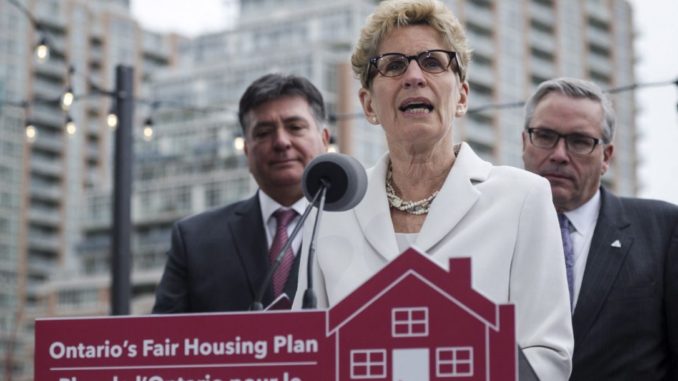
Ontario Introducing Housing Affordability Measures for Homebuyers and Renters
Ontario is taking action to make housing more affordable for homebuyers and renters by introducing the Fair Housing Plan. This set of 16 comprehensive measures would help more people find an affordable place to call home, while bringing stability to the real estate market and protecting the investment of homeowners.
These measures include introducing a 15 per cent Non-Resident Speculation Tax (NRST) on non-Canadian citizens, non-permanent residents and non-Canadian corporations buying residential properties containing one to six units in the Greater Golden Horseshoe (GGH).
Ontario’s economy benefits enormously from newcomers who decide to make the province home. The NRST would help to address unsustainable demand in this region, while ensuring Ontario continues to be a place that welcomes all new residents.
Ontario’s Fair Housing Plan would also expand rent control to all private rental units, including those built after 1991, strengthening protections for tenants against sudden, dramatic rent increases. In addition, it would empower Toronto and potentially other interested municipalities to introduce a tax on vacant homes to encourage owners to sell or rent unoccupied units.
The province will also work with municipalities and other partners to identify provincially owned surplus lands that could be used for affordable and rental housing development.
Housing is essential for families across Ontario, yet too many people are being affected by the growing pressures of trying to buy a home or afford their rent. In particular, the GGH has experienced dramatic price increases in recent months. While rising prices reflect the economic strength of the region and have benefited current homeowners, the cost of buying or renting is creating a massive burden for too many people and families.
Ontario’s Fair Housing Plan includes an additional 12 measures, such as introducing a targeted $125-million, five-year program to encourage the construction of new purpose-built rental apartment buildings by rebating a portion of development charges. The government will also work to better understand and tackle practices that may be contributing to tax avoidance and excessive speculation in the housing market, such as “paper flipping” — a practice that includes entering into a contractual agreement to buy a residential unit and assigning it to another person prior to closing. The Fair Housing Plan will also include a new Housing Supply Team of dedicated provincial employees to identify barriers to specific housing development projects and work with developers and municipalities to find solutions.
Taken together, these new policies represent a substantial, multi-faceted plan to address Ontario’s rising housing costs so that families can access housing that meets their needs.
Making it more affordable to buy or rent a home is part of Ontario’s plan to create jobs, grow our economy and help people in their everyday lives.
Quick Facts
- After two consecutive years of double-digit gains, average house prices in the Toronto region reached $916,567 in March 2017, up 33.2 per cent from a year earlier.
- RBC Economics recently highlighted that housing affordability in the Toronto area for the fourth quarter of 2016 was at its second-worst level on record since the mid-1980s.
- To help Ontarians buy their first home, the province doubled the maximum Land Transfer Tax refund to $4,000 for qualifying first-time homebuyers, effective January 1, 2017.
- According to Urbanation, the average rent per square foot for new leases in the Greater Toronto Area condo market rose 11 per cent in the last quarter of 2016 compared to a year earlier, the fastest pace of growth since at least 2011.
- Ontario’s average vacancy rate dropped to 2.1 per cent in the fall of 2016, from 2.4 per cent in 2015, the lowest vacancy rate since October 2003; in Toronto, the vacancy rate was 1.3 per cent, the lowest in 12 years.
Photo from: www.thestar.com




Leave a Reply